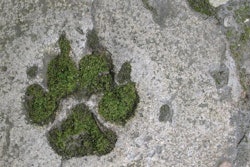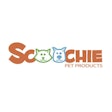
Most humans’ perceptions of kibble color don’t match the actual pets’ ability to see color, much less the animals’ reaction to that color. Ultimately, pet food colorants influence people more than dogs or cats, and as such colorants play a role in positioning a pet food product. Natural pet foods need natural colorants, and when those colors aren’t available, farmers may be able to breed a plant that can provide just the right natural red.
Pet food color effects on owners
“Color creates interest – it makes food look appealing and tasty,” said Tammi Geiger, marketing manager for pet food colorant supplier CHR Hansen, said. “And consumers want to give their pets food that looks appetizing and full of flavor. Color also creates contrast and brightens products to make them look healthier or meatier. Color is important when launching a new product or treat as it helps get the attention of the pet owner.”
Among new products, natural labeling claims have become widespread. Natural pet food continues to be a strong driving trend in owner demand, new product development and subsequent pet food formulation and marketing. Pet owners may see natural colorants as a sign of premium pet food, as human food trends likewise moved away from the vibrant synthetic colors of a candy shop. Natural colorants may be one way pet food producers can make the appearance of natural products match pet owner perceptions of what natural kibble should look like.
Natural versus synthetic pet food colors
Switching from synthetic colors to natural may have a learning curve, Geiger said, but that can be overcome with a little education.
“It is important to understand how your production process and recipe can affect the final color of your product,” Geiger said. “For example, pH is important to understand. With some natural pigments, like anthocyanins, pH can impact the final shade and stability…Anthocyanins in general are very stable in low pH applications, and at neutral or higher pH they are less sensitive if the moisture content is low. And the more stable anthocyanins are suitable for applications such as baked treats and extruded kibble.”
Developing natural colorants can take a bit of tinkering too. In one case, CHR Hansen needed to breed their own plants when they needed a particular color.
“Pet food companies are looking for an alternative to synthetic reds and iron oxides,” Geiger said. “Hansen’s new ColorFruit reds are based on the Hansen sweet potato - a new variety of sweet potato we created ourselves. They are bright, beautiful and stable and 100% plant-based with no off-taste. They are minimally processed and suitable for a long list of pet products. The Hansen sweet potato received the IFT19 Food Expo Innovation Award, which recognizes outstanding innovation in products, equipment, instrumentation, technology and services.”
Pet food ingredient demand trends
Pet food customer demands now follow human food demands, changing which ingredients dog and cat food manufacturers purchase. Pet food ingredient commodity buyers can learn what these future demands might be at Petfood Forum.
Petfood Forum brings together pet food professionals from around the world to network, exchange ideas and move business forward with one another and with the industry's leading pet food manufacturers and suppliers.
The in-person and on-demand event delivers the opportunity to learn about pet nutrition and ingredients, global pet food market growth, pet food safety, processing, packaging and more, all from leading, recognized pet food industry experts.

















